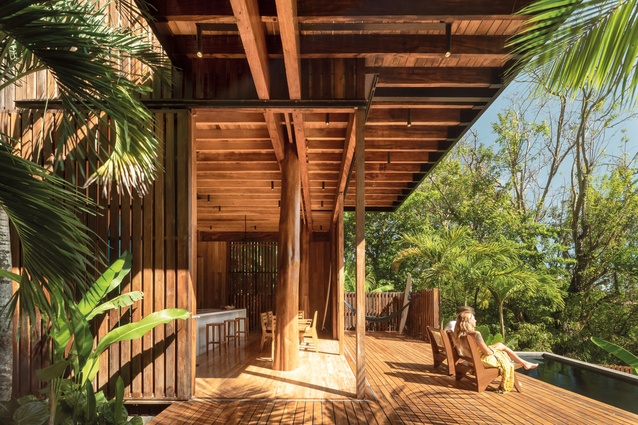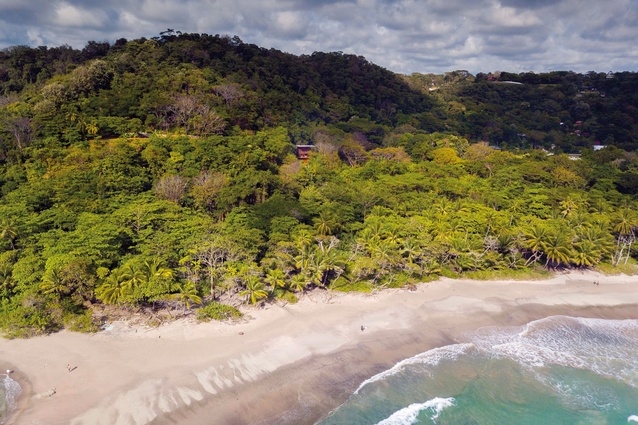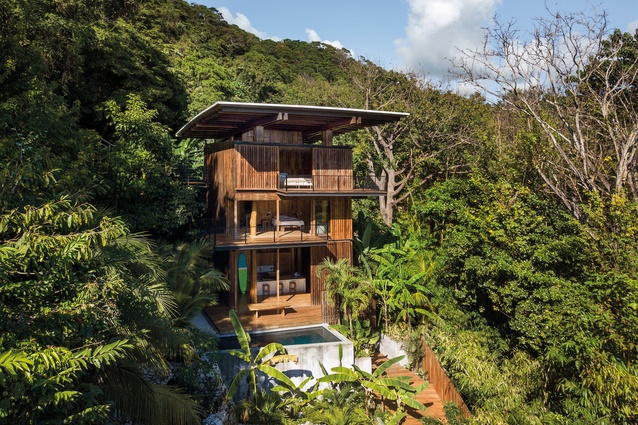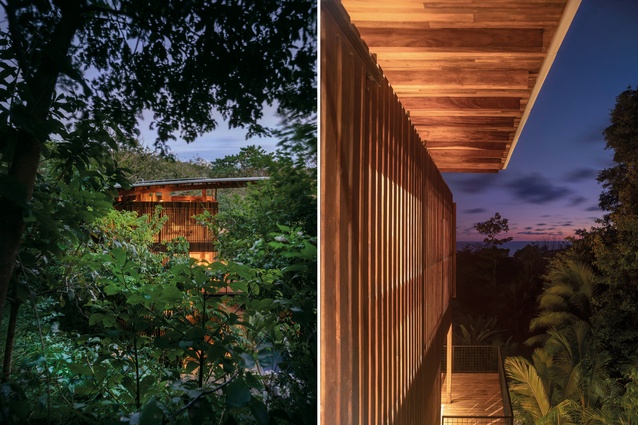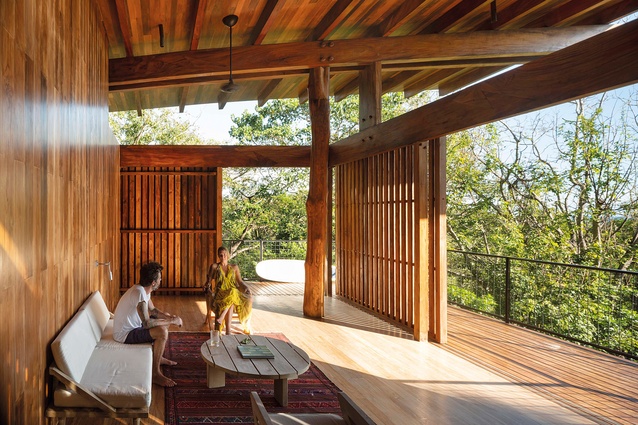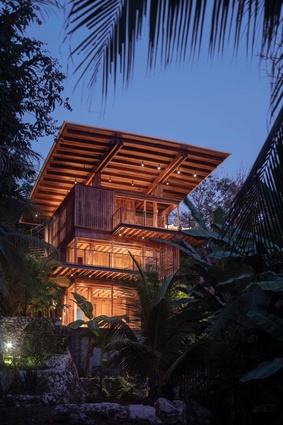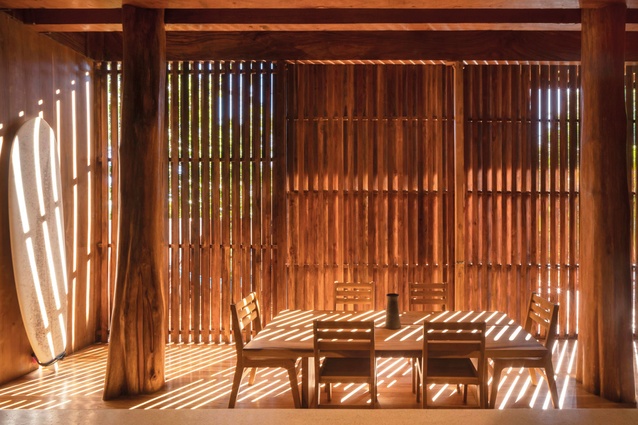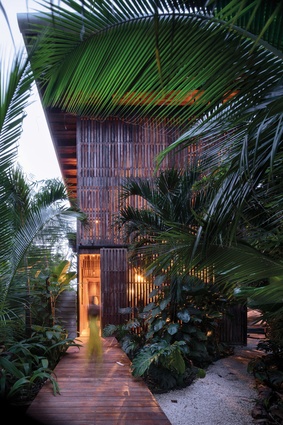Surf and canopy: Costa Rica Tree House
Dreams of living in a tree house culminated in this Costa Rican vacation spot, dripping in verdure.
Like its New Zealand counterpart, the Costa Rican coastline has moments where dense bushland meets sandy stretches of shore. For a couple of surfers-slash-environmentalists, building a home on such a site near the Pacific Coast’s Playa Hermosa Beach offered the best of both worlds.
The Portland-based clients approached architect Tom Kundig, who had previously designed several houses near their home town of Sun Valley in Idaho. The well-known architect is owner and design principal at Olson Kundig, a Seattle-based firm founded on the idea that buildings can serve as bridges between nature, culture and people.
After explaining to their architect that they wanted to live in a “tree house”, the clients took Kundig on a tour of their richly forested Costa Rican property. From the piece of land that has been in the family for years, they selected a site close to the beach for the build. “Fitting,” says Kundig, since “the clients spend a lot of time surfing and being on the water. It’s an important part of their life.”
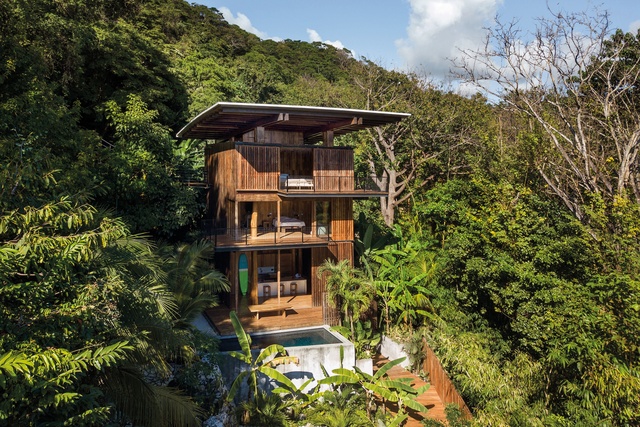
It was also a perfect spot in which to make their tree-house dream a reality; the project was designed over the course of a year and constructed in around 16 months. “The chosen site presented the opportunity for natural immersion and connection at a variety of levels,” says Kundig.
Aside from the obvious relationship between the forest floor and the ground floor – home to an open-plan kitchen and dining area, and connected to a pool via an outdoor living space – the middle story of the slim tower, where a bedroom and bathroom are located, is nestled within the trees. The topmost level contains a living room and bathroom, and rises above the green canopy to afford views of the Playa Hermosa surf patterns.
Another key aspect of the brief was that the vacation home should reflect the clients’ strong commitment to sustainable land management in Costa Rica. The design, therefore, has a relatively small footprint – both literally and figuratively. It incorporates a large solar array and rainwater collection system, and operates passively in the temperate semi-tropical environment.
To heighten the engagement between the inhabitants and the landscape beyond, the home is designed as what Kundig calls an “open-air surfer hut”. A double-screen shutter system introduces both daylight and natural ventilation when the residents are home, and privacy and security when they’re elsewhere.
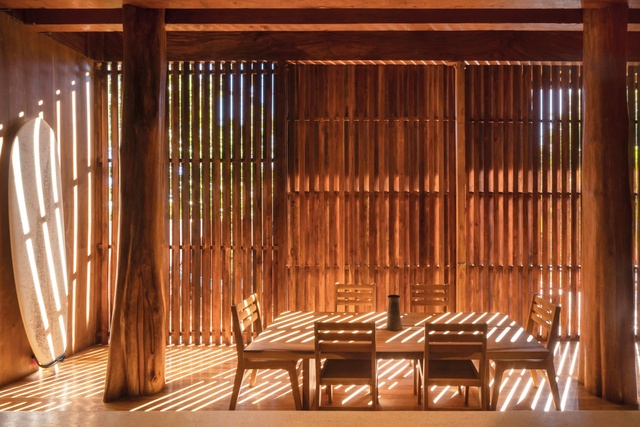
“Creating an open, naturally ventilated house in such a wet climate was certainly a challenge,” says Kundig. “The double-layer movable screens help to keep water out, and the large roof overhang and gutter drainage systems are likewise designed to keep the interior of the home protected and dry.”
Relying on local and sustainable materials – teak wood harvested on site features heavily – was a win-win situation. Not only did the decision satisfy the clients’ sustainability goals, but the home’s location on a fairly remote peninsula made local the smartest way to go. “We had to be inventive with solving design challenges,” says Kundig, who points to the balcony railings as a prime example. “Instead of utilising rebar, which would have been difficult to import to the site, our contractor was able to craft fully custom railing elements out of welded steel.”
Another example of on-the-spot ingenuity is the way in which Kundig and his team handled the site’s tricky topography. “The slope in the road means that there are several different approaches to the site and the house, from the upper levels as well as from the ground floor. Rather than creating one main entry, we took it as an opportunity to develop multiple entrances. You can drive up to the ground-level entry or take the suspension bridge through the canopy and enter on the top floor.”
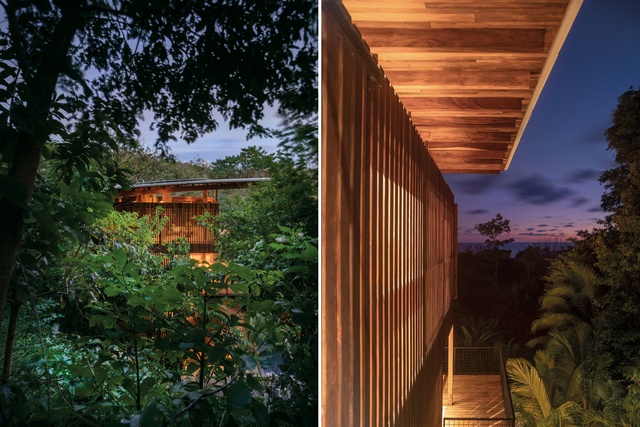
Distance to the site was yet another challenge. Thankfully, says the architect, the project’s contractor is a “good craftsman and really understood the overall design vision. We trusted him to make decisions on site that helped bring that vision to life.”
Inside, wood, unsurprisingly, makes a strong appearance across ceilings and floors, but it’s the actual knobbly tree trunks used as columns on the ground floor that bring the tree-house concept home. Meanwhile, straightforward furnishings – an unassuming dining table, a simple wood-frame couch – help to ensure that the impressive vistas remain in focus.
This article first appeared in Urbis magazine.


